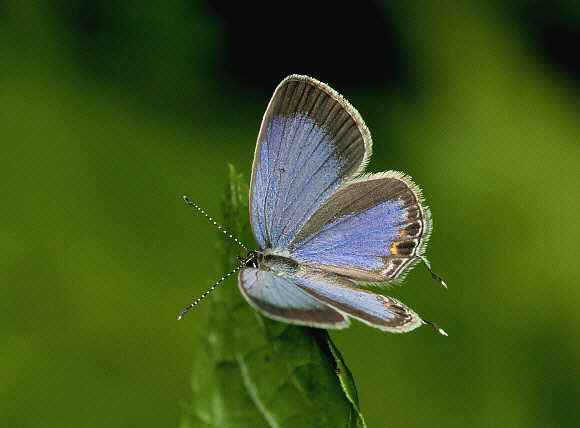
Introduction
The genus Everes comprises of 7 species distributed variously across North America, Europe, Asia, the Oriental region and Australia. It is regarded by some authorities as a subgenus of Cupido which consists of a further 11 Eurasian species.
Everes lacturnus is found from India east to China, Korea and Japan, south through Thailand, West Malaysia, Sumatra, Borneo, Sulawesi and the smaller islands west of the Wallace Line, and down to the north coast of Australia.
On the upper surface of the wings the male is violet-blue, with blackish borders which vary in width according to location and subspecies. The female is entirely brown, except for the orange lunules and black spots at the tornus of the hindwings. The short tail is present in both sexes, but is often lost after a few days of activity.
The underside is pale silvery-grey, with a bright reddish-orange blotch at the hindwing tornus, and a series of dark grey marginal and submarginal dashes.
Habitats
This tiny butterfly, which is also known as the Tailed Cupid, is found in disturbed habitats including forest clearings, plantations, parks, gardens, and along roadsides and riverbanks. It occurs at all elevations between sea level and at least 1600 metres.
Lifecycle
The eggs are pale green, round and flattened. They are laid singly on the flowers and pods of the foodplants which include several Desmodium and Trifolium species, and undoubtedly also on other genera of low-growing herbaceous Fabaceae.
The caterpillar is woodlouse-shaped and slightly hairy. It is green in colour with small patches of reddish-brown dorsally.
The chrysalis is pale translucent green, marked with a double row of tiny black dots along the back, and covered in shortish soft hairs on the head, thorax and lower abdomen. It is formed among the fruit pods of the foodplant.
Adult behaviour
Males are usually seen singly, or in mixed aggregations with other Polyommatines, mud-puddling on damp patches of ground.
Both sexes visit flowers, showing a preference for small white or blue species rather than the more showy plants. They tend to spend a long time on each plant, walking about over the flower heads as they probe different parts of the nectaries with their short proboscises.
When feeding, either on the ground or at flowers, the butterflies hold their wings erect, but they can also be seen basking on foliage with their wings held half open.
